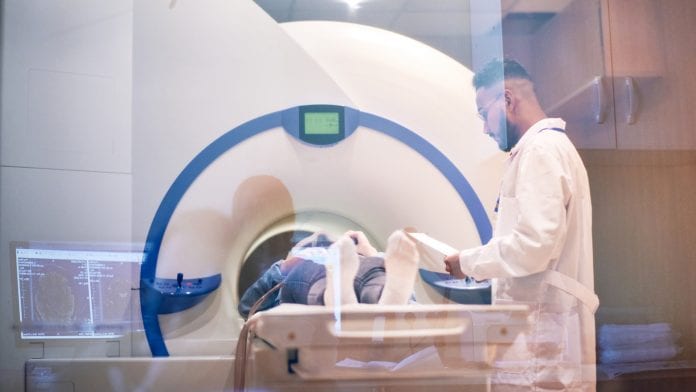
A simple MRI measurement of the breast could reduce the biopsy rate in breast cancer screenings by 30%, a study has revealed.
Early detection of breast cancer, the most prevalent fatal cancer in women, increases chances of recovery but Magnetic Resonance Imaging (MRI), a method for identifying breast tissue tumours, can cause false alarms in one to two out of 10 women because of tissue changes that are mistaken for breast cancer on MRI scans. This can then lead to procedures such as biopsies, which take a small sample of breast tissue for further examination.
A research team, led by the Medical University of Vienna, has confirmed a threshold value for a non-invasive imaging biomarker. This technique, called diffusion-weighted imaging (DWI), can be integrated into MRI scans, and can determine whether a biopsy is necessary, with the potential to reduce the rate of biopsies following MRI screenings by 30%. MRIs use magnetic fields to calculate the distribution of water molecules in the body and this can be applied to visualise structures, such as blood vessels. For enhanced breast MRIs, the blood circulation in the breast tissue is measured. This technique is very precise, but it can be challenging to distinguish the differences between malignant nodes and tissues that are well supplied with blood as a result of other reasons, such as inflammation.
The technique developed by the research team, diffusion-weighted imaging, maps the motion of water molecules in the investigated structures. This method can be incorporated into the standard MRI process.
Paola Clauser, of the Department of Biomedical Imaging and Image-guided Therapy at the Medical University of Vienna and Vienna General Hospital, member of the Comprehensive Cancer Centre and lead author of the study, commented: “DWI enables us to characterise lesions much better. Because hydrogen molecules “dance” faster in healthy tissue than they do in malignant tumours. Carcinomas alter tissue on a microscopic scale and thereby inhibit the motion of water molecules. We have now shown that we do not need to take biopsies from breast tumours, if the threshold value (ADC) is equal to or greater than 1.5+10-3 mm2/s.”
Diffusion-weighted imaging only takes up to three minutes but can improve diagnoses significantly. Pascal Baltzer, of the same institutions as Clauser, and principal investigator, said: “The multicentre study enabled us to establish this threshold value as an objective, standardised biomarker. It can be used anywhere, since it is largely independent of the equipment, the experience of the radiologist, the measuring time and the measuring technique.
“Our finding can be used immediately for diagnostic purposes. It does not require a special centre – every registered radiology department would be able to use it straight away.”
The study has been published in the Clinical Cancer Research journal.







